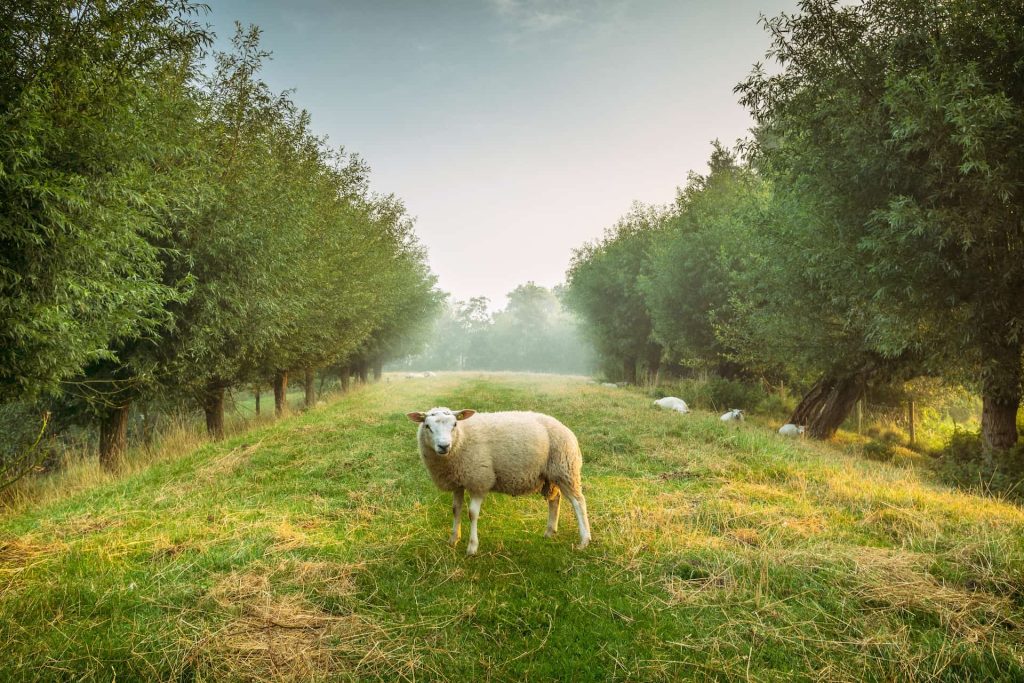A lot has been said and written about carbon dioxide emissions and how to deal with them. Some suggest that we stop the emissions by forbidding fossil fuels etc. Some others mean it’s better to store the carbon somewhere, and that “somewhere” could be in the forest. The fact is that forests store a lot of carbon dioxide. One of the problems is that the total forested area on the earth is shrinking. Is there a way to make it grow?
Agroforestry – part of the solution
According to FAO’s report Global Forest Resources Assessments 2020: Main Report, Rome the forested area of the World is shrinking. According to the report, the good news is that the decrease has slowed down. But it’s still shrinking. So, does anyone do anything about it?
Yes, is a short answer. The fact that the loss went from 7,8 million hectares between 1990 – 2000 to 4,7 million hectares between 2010 – 2020 shows that something is actually done. Of course, turning the trend into a growing forested area is desirable.
Agroforestry is described as “significantly increasing the number of trees we incorporate into farming systems”. In November 2022, The Woodland Trust in the UK released a report named Farming for the future. The report claims that agroforestry can make a great contribution to tackling the emission problems.
Agroforestry – according to Farming for the future
Currently, arable areas in the UK release on average nearly two tons of carbon dioxide annually, and grassland areas with livestock release nearly 4 tons. Research presented in the report shows that the adoption of agroforestry can enhance and connect habitats and help store more carbon in the landscape. Food production will be maintained, and, in some cases, productivity will be improved both in arable and pastoral farming systems.
Examples of a theoretical outcome of agroforestry in the UK:
- Over 30 years, silvoarable systems can sequester the equivalent of eight tons of carbon per hectare per year – equivalent to the average annual footprint of a UK household.
- Establishing silvopastoral agroforestry on 30 percent of UK grassland (3,5 million hectares; 84.000 hectares per year for 40 years starting in 2022) would result in net zero emissions from the grassland sector by 2050, and a net sequestration rate of 21 million tons of carbon equivalent per year by 2062.
- Allowing an existing hedge to increase height from two to three meters can store an additional seven tons of carbon per hectare annually.
Furthermore, there is good evidence that agroforestry can increase the abundance and richness of farmland species, improve soil structure, and function, and enhance other key ecosystem services like pollination, pest control, and decomposition.
What about the interest in agroforestry
It is estimated that only 3,3 percent of the agricultural area in the UK is under agroforestry. That is less than half the average in Europe. There seem to be significant cultural, economic, and knowledge barriers among the farmers. The government has taken little action to encourage farmers to adopt agroforestry systems.
One can imagine that the main target for the farmers has been food production and to increase that production during the 20th century. A growing population needed to be fed and hedge rows and edge trees were cut down to give way for more farmland. To start disturbing fields with trees again is probably a bit strange to many farmers.
What could be planted?
It mustn’t necessarily be forest or hedge species planted on farmland. Fruit trees are mentioned as examples. If you for example grow apples along the fields, or in straight rows in the fields, you get an extra crop that could bring an income.
The Farming For the Future report mentions an example (on page 13) where the farmer planted apple trees in 24-meter-wide alleys. In October 2009, 52 hectares of an organic farm were converted to an agroforestry system by planting 4.500 apple trees. The tree rows were three meters wide and sown with wildflowers (meaning that the total width of the rows was 27 meters).
The result was an average Land Equivalent Ration (LER) of 1.25 compared to the previous monoculture. At the same time, the trees alone store four tons of carbon per hectare per year, and the biodiversity is improved.
Who wants to try?
Again, a grand idea pops up. In this case, an old idea that has proven itself earlier in history. When reading the Farming For the Future report one wonders why not everybody goes for agroforestry. It seems to be smart, both environmentally sound and profitable. The benefits are many. So, what’s the problem?
I can only guess, but some issues are obvious; If you decide to plant e.g., apple trees on your farmland, it will take some years before the apples can be harvested. The apple trees must be maintained and held within their area, out of the way of the machines working with normal agriculture. The apples must be harvested to gain profit from them. A process that demands other types of methods, people(?), and machines than the usual ones on the farm.
Furthermore, most farmers are no foresters. They have no interest in or knowledge of dealing with trees.
Well, the idea seems grand to me anyway. But I’m not a farmer. I also think it will take quite a lot of encouragement from governments and authorities to make it fly.
It strikes me that whenever ideas (new and old) are discussed, it’s assumed that “everyone” should adapt to them. It’s like: “The idea is so good that everyone should do it.” But if everyone does the same thing, we will not get biodiversity. Theoretically, it would be best for the environment if everyone does forest and farm management in their own way.
Sources: The Woodland Trust, the Farm Woodland Forum,












